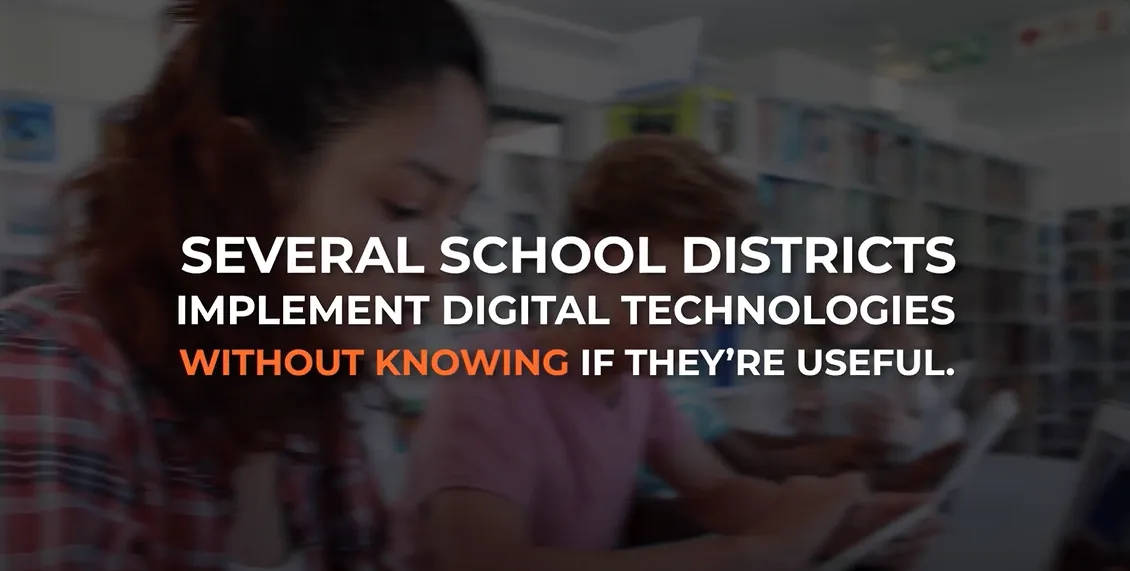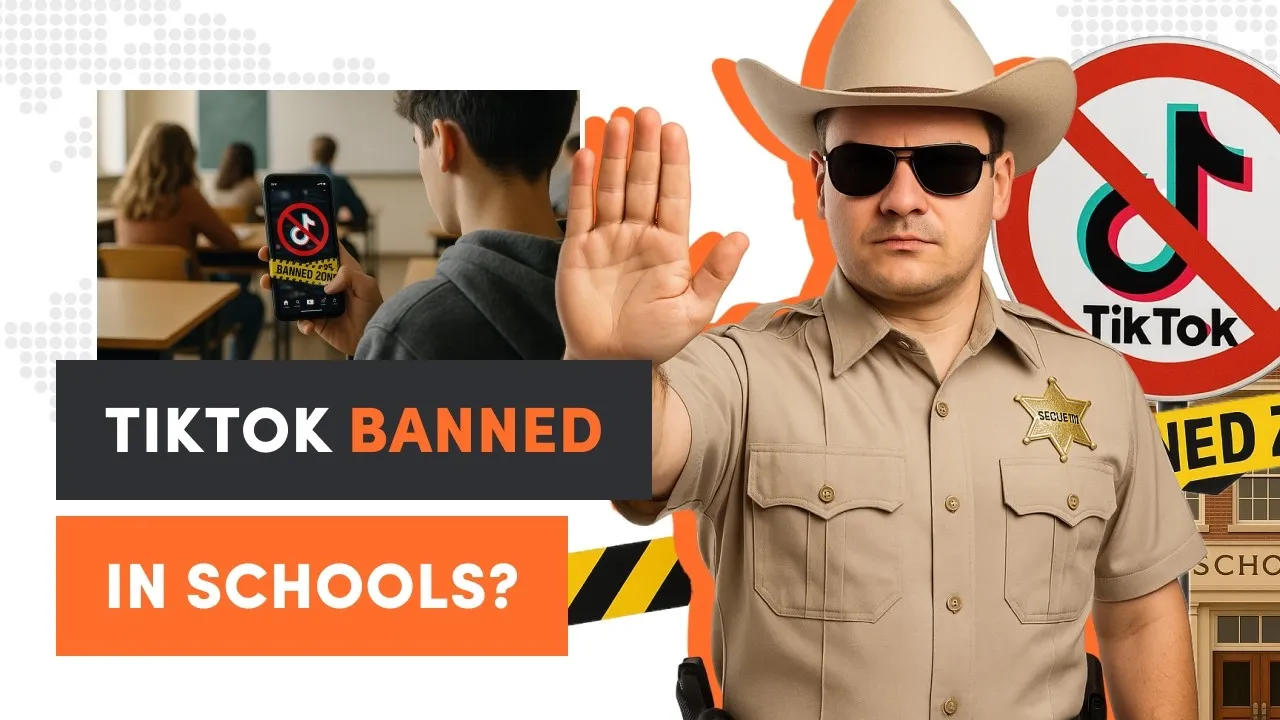What makes an LMS stand out in the market? How can you ensure your LMS grows?
These are important questions, and while there are endless possibilities, we will focus on five crucial features shaping the future of the edtech industry. Narrowing the possibilities down will help you focus on what's most important. So, whether you are a business owner eager to upgrade your learning tools or an educational professional passionate about making the learning experience better, you have come to the right place.
Feature 1: Artificial Intelligence (AI)

First up, let's start with AI solutions. Right now, artificial intelligence is everywhere and impacts other industries, not just learning. It seems to be a necessary resource in automating tasks and improving efficiency across various sectors.
When it comes to LMS platforms and online learning, AI has a huge impact.
AI analyzes students' emotions and participation in real time to help teachers improve lessons. This feature can identify subtle indications like confusion, boredom, and satisfaction that reflect student participation and knowledge. Voice recognition may also assess student emotions and uncertainties by analyzing tone, pitch, and the pace at which they talk. With AI, you can also change the approach to your potential customers through hyper-personalization. The easiest way is to make a unique personalized message to large audiences that includes a human touch, not made by you but, for example, by OpenAI's GPT-4.

AI in Movie Production and LMS
Another field where AI is making progress is movies. How does it connect with LMS platforms? Simply, it helps with writing and post-production, making it faster to create courses. As a result, you can save some money on development time and personnel. In this example, content creators may focus on the artistic parts of film production, knowing that AI can efficiently support the technical part.
Ethical Challenges in AI
But not everything always works as planned and a perfect example here is Google.
Recently, they had a case where they had to disable their photo service's ability to recognize gorillas.
Why?
Well, it repeatedly identified some people as gorillas too. This incident exposed the flaws in present AI technology and the ethical issues that must be considered while developing and deploying it. This brings up a very important question about how we should interact with AI in a social context: are these issues just technical problems, or are they a test of our morals? In a world where things change so quickly, our approach to AI integration must grow with it. With a dedication to human well-being, openly discussing these issues will guarantee that AI development meets our greatest social ideals and goals.
Feature 2: Skill-Based Training

Now that we have talked about how AI makes learning tools better, let's move on to our second feature: skill-based training. This method is becoming an important part of learning management systems to get students ready for real-world scenarios. As the job market expects more and more specific skills, LMS platforms should offer students the tools to focus on real skills. This will make education not only informative but also life-changing, as they will acquire skills faster without wasting time on education they don't really need.
Have your parents ever told you that you will get the best job right after college?
~ If yes, they lied to you. Now you have to have additional skills or experience. That is why custom LMS software that offer skill-based training are in high demand.
Automation and Personalization in Skill-Based Training
Moreover, if skill-based training is combined with automation, it's much easier to personalize learning materials. Learners can get assessments and feedback regarding their skill improvements. Automation guarantees that learners acquire certain skills and are efficiently led through their learning journey based on their strengths and weaknesses. Consider LMS systems as a built-in advisor that guides you through education depending on your talents and interests. Every quiz and assignment is a chance to personalize your learning experience and improve your skills in the most efficient way. If you break difficult concepts into tiny, manageable chunks, you make learning fun and interesting.
Combining everything under one roof is consolidation in skill-based training, where practice and repetition are critical to mastery. Having everything in one place lets you focus on improving your abilities rather than moving between tools and resources. Automation, simplicity, and consolidation in LMS systems make skill-based training more complex and more aligned with your unique learning goals and today’s employment market. These LMS upgrades may empower you and make your education very relevant in a world where practical skills sometimes transcend academic knowledge.
What do you think will mostly change LMS systems as we know them? Is it automation, simplicity, consolidation, or maybe something else? Let us know in the comments below!
Try our developers.
Free for 2 weeks.
No risk. Just results. Get a feel for our process, speed, and quality — work with our developers for a trial sprint and see why global companies choose Selleo.
Feature 3: Impact Measurement
Now, let's talk about a business feature that has a huge impact on your LMS:
- Placing a high priority on impact measurement, not only in learning outcomes but in the whole business.
- Keeping track of how tools operate and what outcomes they generate is crucial as the market grows fast in edtech.
- Measuring the effects and effectiveness of learning is important not only for assessing educational technology but also for the viability of edtech companies.
Why is this crucial?
First, it lets providers know what works and what doesn't, giving room for adjustments. This data-driven strategy prevents resource waste and refines instructional content to fit student requirements. Secondly, it helps institutions reduce their toolkits and focus on solutions with genuine educational value, which as a result enhances student learning.
Importance of Data-Driven Strategy

Should you worry about the results?
Consider learning as a new edtech tool—you want to know if it improves learning, right? A careful, methodical examination helps here. Not only must these tools be innovative and interesting, but they must also be educationally beneficial. This is especially relevant in K-12 education, as technologies have exceeded their capacity to be measured. Several school districts implement digital technologies, but they have no idea if they are efficient.
Feature 4: Gamification, VR, and Metaverse
Now let's focus on a part that is necessary for a modern LMS platform:
- gamification, VR, and the metaverse.
Modern technologies are making gamification:
- more dynamic, engaging, and effective in online learning.
Perfect examples are:
- VR technology and the metaverse, which go beyond simple content delivery.
- VR immerses students in three-dimensional interactive environments where they can apply their knowledge in a virtual scientific lab.
- Gamification is effective in this setting because it may be integrated into a larger narrative across learning modules and activities. In the metaverse, students may do quests, like projects, to solve issues together, gain points, and advance in their education.
VR puts you in the middle of the action, changing how you learn.
No matter if you are a medical student practicing complex surgical procedures in a risk-free virtual environment or a history enthusiast exploring ancient civilizations, VR brings your studies to life in a way traditional online platforms simply can't match.
Gamification in Business Meetings
One interesting benefit is the gamification of business meetings. For instance, business owners and their employees can have meetings in the metaverse without the need to actually see each other, but they can still interact. This way, you don't even need to wear a shirt for an online meeting!
Have you ever tried something like that?
~ Definitely let me know in the comments! Maybe you had a funny situation that's worth sharing.
Importance of Interactive Content
So, why do I emphasize this so much?
Educational content must be interactive, visually appealing, and immersive to benefit from modern technologies.
This means replacing static films and quizzes with interactive scenario-based exercises that test your knowledge in complicated real-world settings. This will show your customers that you are an expert, and when they experience something they have never tried before, they will be more likely to come back and try again.
Feature 5: Digitalization of Schools
The fifth feature is the digitalization of schools, which is a major educational technology trend. This revolutionary process is about modernizing the educational system to make learning more accessible, adaptable, and inclusive for digital-savvy learners. As we go into the digital age, traditional educational operations are undergoing a major transformation, and you are right at the heart of this shift.
For example:
- virtual deans' offices and online administrative services are a new trend in how you and your professors handle day-to-day tasks. This evolution not only saves time and money but can also eliminate geographical barriers, making education more accessible than ever before.
Modern digital platforms change the way they identify and track students; they get visual student IDs that consolidate access to libraries, exam entries, and more. This means that no matter where you are, you can access academic services just as if you were on a campus.
It is also important to mention that mental health support has moved online, with virtual psychologists available to help deal with problems, particularly as remote learning can make a learner feel isolated. Having instant access to mental health professionals is more crucial than ever.
Virtual Collaboration Tools and Digital Transformation
Perhaps the most significant advancement in the digitalization of education is the development of live collaboration tools and virtual classrooms. These technologies allow you to engage in real-time interactive learning experiences with students and teachers across the globe.
Do you agree with me or think something else is the most important?
Gamification Statistics and Future Trends
After discussing the top five features and trends of LMS platforms, let's switch gears and talk about some statistics. A recent gamification report shows that this tool is transforming the way we engage with various activities, not just in education but across many industries.
Here's a quick look:
- We know that gamification is all about adding game elements like points, badges, and leaderboards to non-game activities to make them more engaging and fun.
- It's proven to be very effective in getting employees motivated, improving learning outcomes, and helping people get used to new technologies

Sectors and Companies Wich Use Gamification Successfully
Various sectors are using gamification successfully. In education, platforms like UXl, ClassDojo, or Minecraft EDU make learning more interactive and enjoyable. Companies like Walmart and Bloomingdale's use VR and interactive challenges for employee training. Health and fitness apps like Fitbit and Peloton encourage healthier lifestyles through gamified activities, while finance apps like Acorns and Zogo help people develop better financial habits.
Looking ahead, gamification has a bright future. Big tech companies like Facebook, TikTok, and LinkedIn are adding gamified features to keep users engaged. IoT devices are expected to integrate gamification for more interactive experiences, and it is going to continue playing a key role in keeping employees and customers engaged.
Challenges
There are some challenges, like not focusing too much on rewards, keeping users engaged long-term, and avoiding overly complex systems. But overall, gamification is a powerful tool for boosting motivation and engagement across different fields.
Interestingly, some popular people use this trend to their advantage.
For example:
- Mr. Beast uses challenges and contests in his videos.
- Mark Rober creates engaging science experiments with elements of fun and competition,
- Piotr "vski" Cox organizes weightlifting challenges and shows preparations for marathons.
How about you?
~ Are you using gamification on your platform? Do you think employees and students learn easier this way?
Conclusions
These five features—AI, skill-based training, impact measurement, gamification, and digitalization—are shaping the future of LMS platforms. By understanding and implementing these features, you can ensure your LMS not only grows but also stays relevant. Join the conversation in the comment section below—your insights could spark the next big innovation in edtech!





